
For Mio’s first birthday party, we wanted to incorporate a Japanese traditional element into the celebration, and decided to have her carry issho mochi, followed by erabitori. Here’s a little background information on these two customs…
ISSHO MOCHI (├ż┬ĖŌé¼├ź┬ŹŌĆĪ├®┬żŌĆ”)
A common Japanese first birthday custom is to have the toddler carry piggyback a large mochi (rice cake) weighing 1 sho. The word for the volume unit issho (├ż┬ĖŌé¼├ź┬ŹŌĆĪ), roughly equivalent to 1.8 liters, is a homophone for issho (├ż┬ĖŌé¼├¦ŌĆØ┼Ė) meaning ├óŌé¼┼ōa whole lifetime,├óŌé¼┬Ø and the issho mochi (├ż┬ĖŌé¼├ź┬ŹŌĆĪ├®┬żŌĆ”) symbolizes the parents’ hope that the child will never go hungry throughout her lifetime.

The discomfort brought on by the sudden yoking of the child to the rice cakes can also be said to signify an introduction to the future challenges which lay in store for the child as she grows older. It├óŌé¼Ōäós like saying, ├óŌé¼┼ōthis is what life is like, kiddo!├óŌé¼┬Ø
When the child falls down on her backside after having stood for a second or two, it is said that the child’s impurities are washed away. The heavy weight making it difficult for the child to stand has another significance as well — it is an expression of the parents’ desire that their child not grow up too fast.
ERABITORI (├®┬ü┬Ė├Ż┬ü┬│├ź┬ÅŌĆō├ŻŌĆÜ┼Ā)
Another part of a Japanese first birthday tradition is an event known as erabitori (├®┬ü┬Ė├Ż┬ü┬│├ź┬ÅŌĆō├ŻŌĆÜ┼Ā), the literal translation being “to pick and keep an item.” The following objects were set before Mio. It is said that the first object that the baby selects will show her calling, or a tendency towards a specific career field.
WRITING BRUSH: Artist / Writer
CALCULATOR: Merchant / Good with calculation
MONEY: Blessed with an abundance of wealth, property, and other material goods
SCISSORS: Skillful hands / Fashion
MEASURING RULER: Methodical / Own a big house
CHOPSTICKS: Chef / Never go hungry
DICTIONARY: Scholar / Academic Excellence
BALL: Athlete / Outstanding motor reflexes
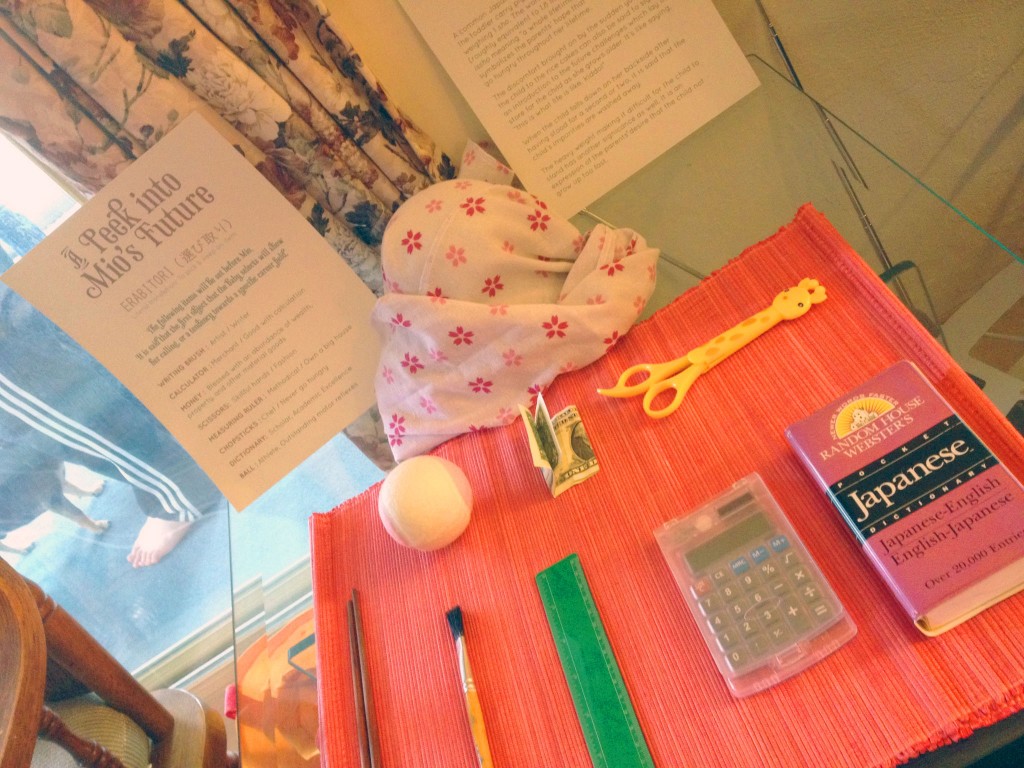
How did Mio fare with these birthday activities? You can see a play-by-play with the following photos further down, or just watch the video:
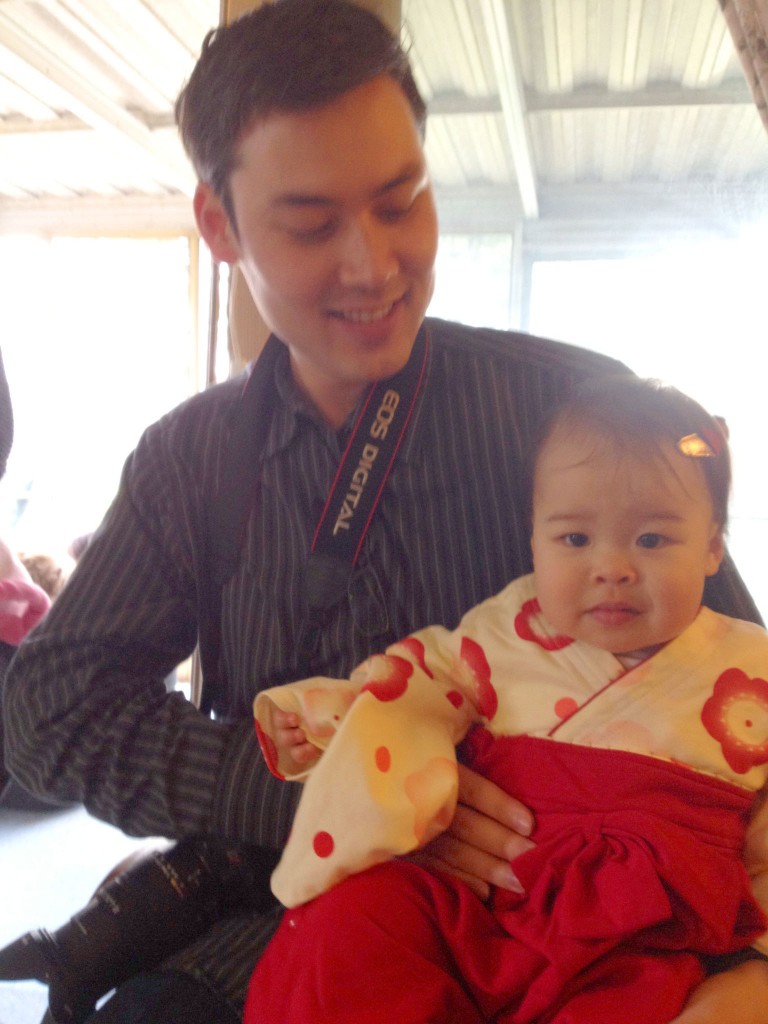
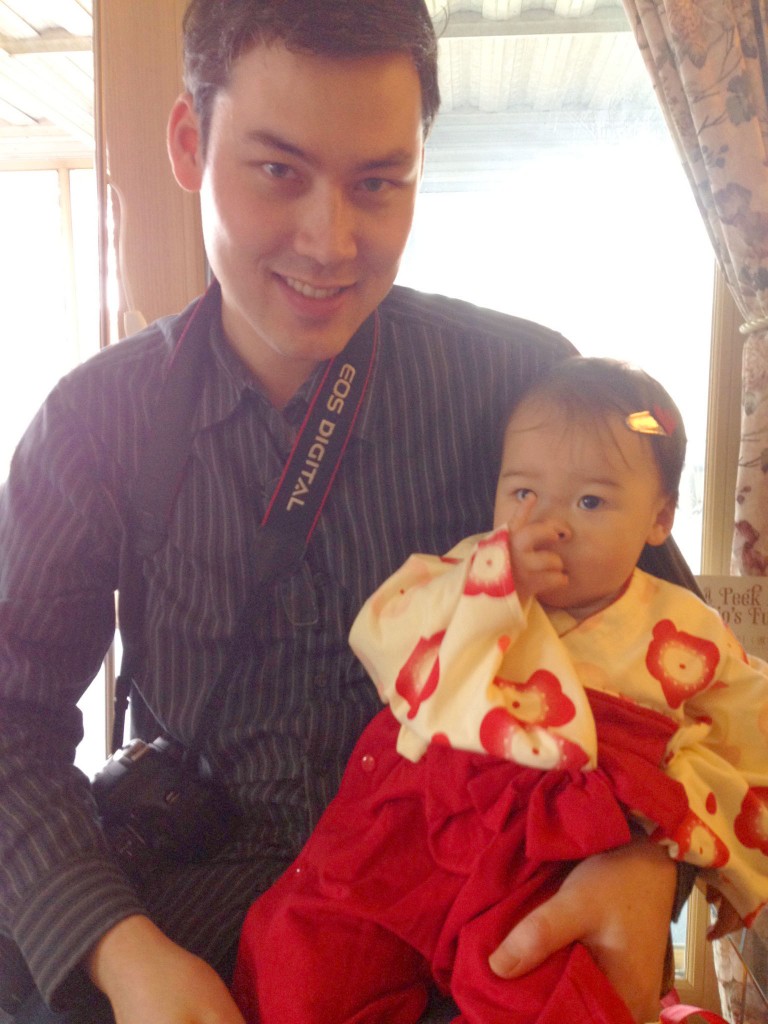
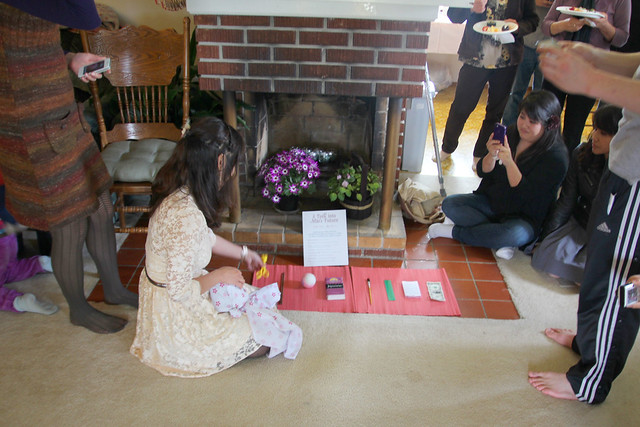
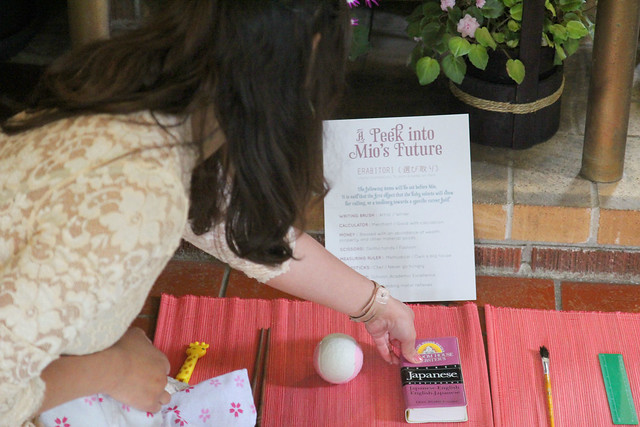
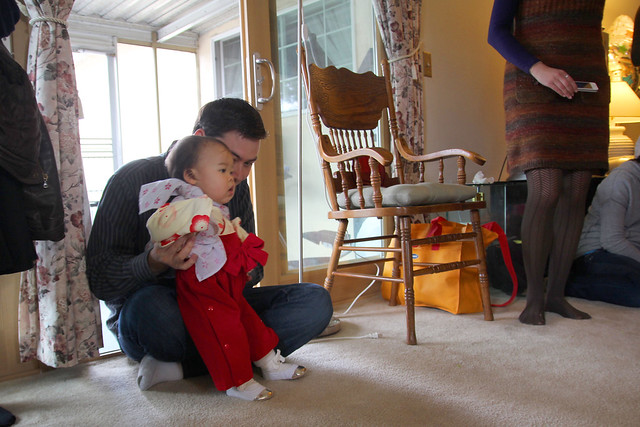

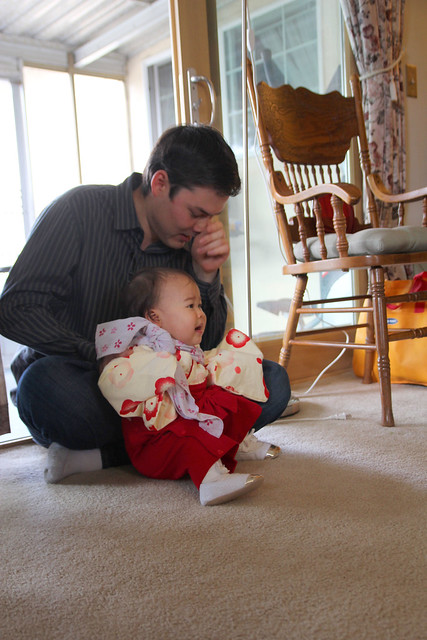
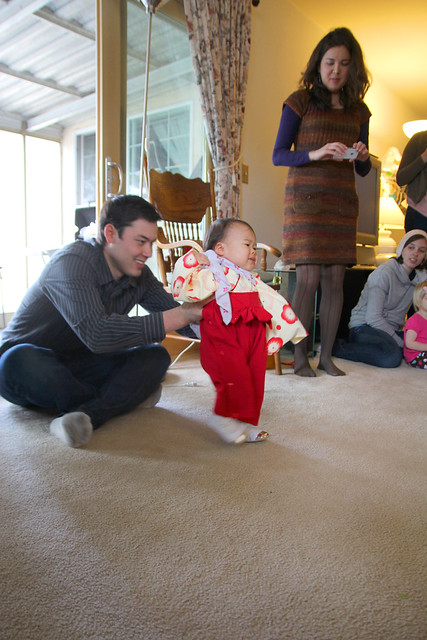

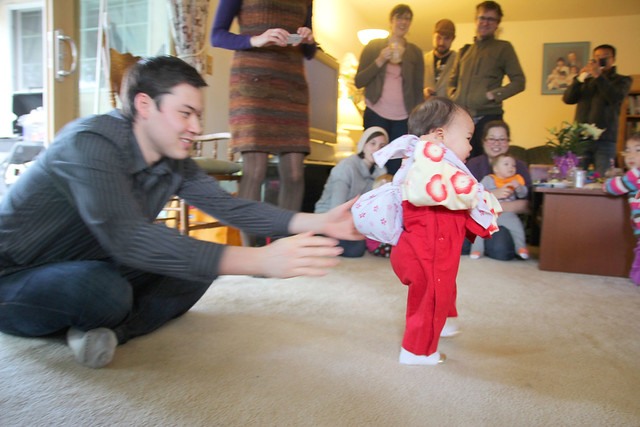
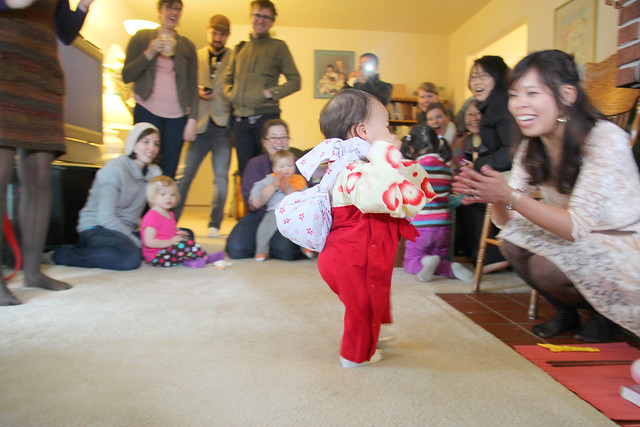
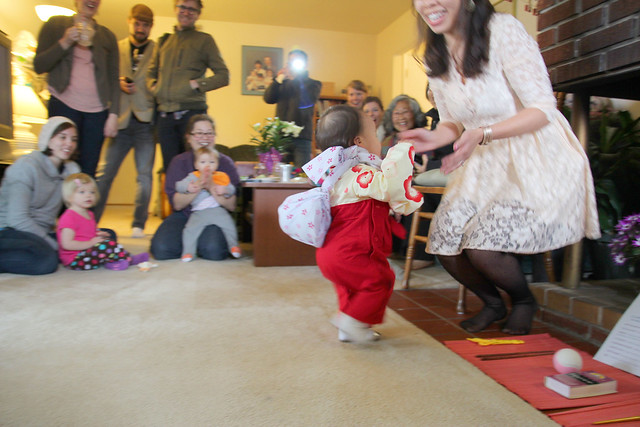
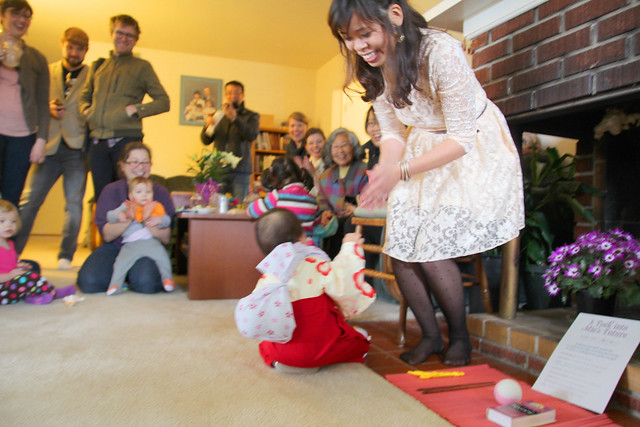
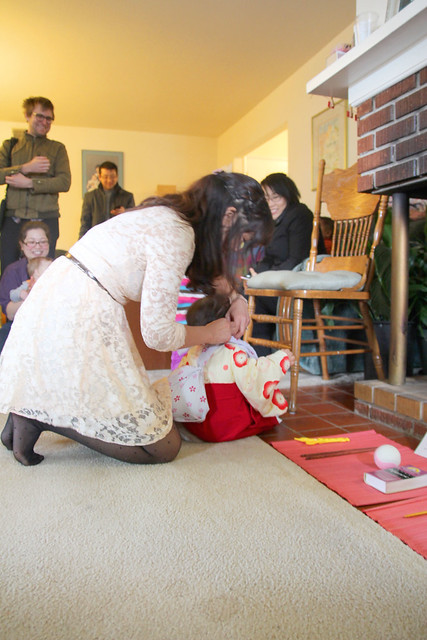
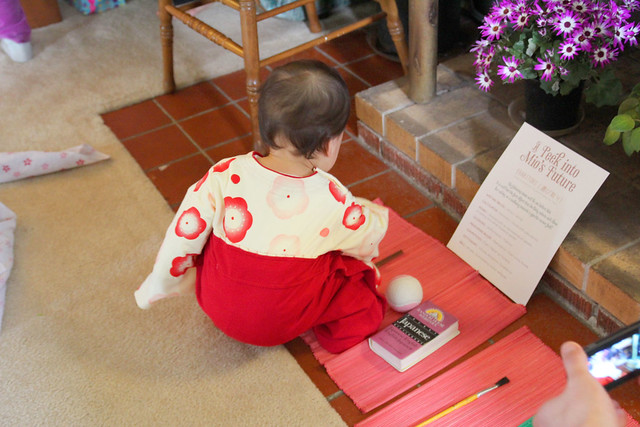
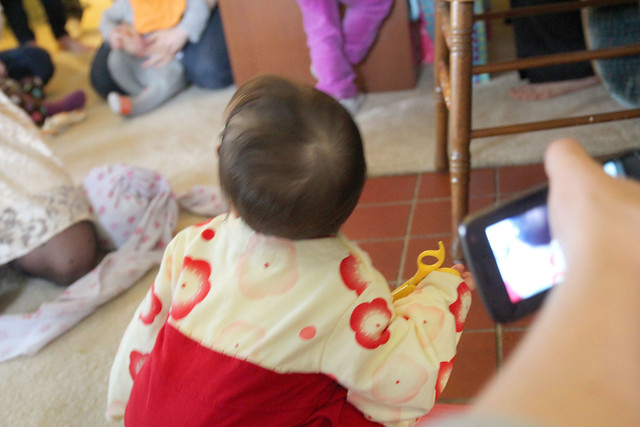

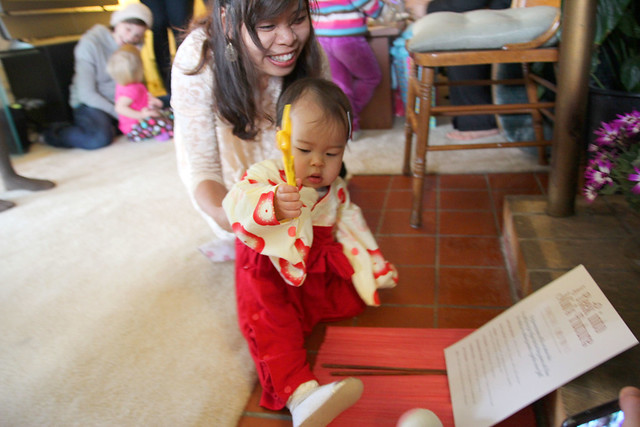

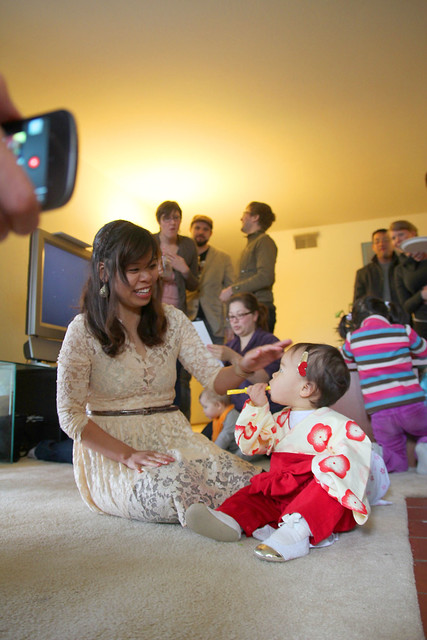
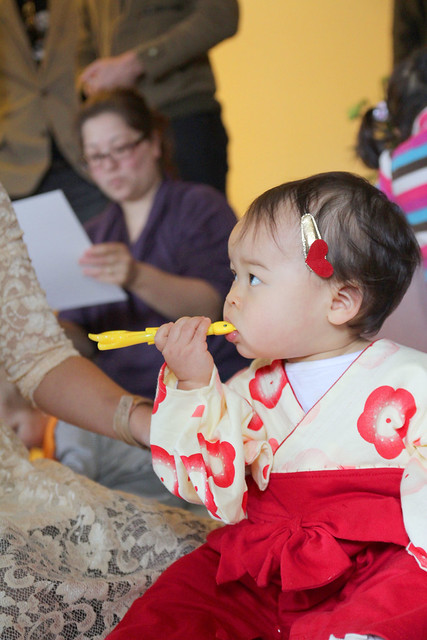
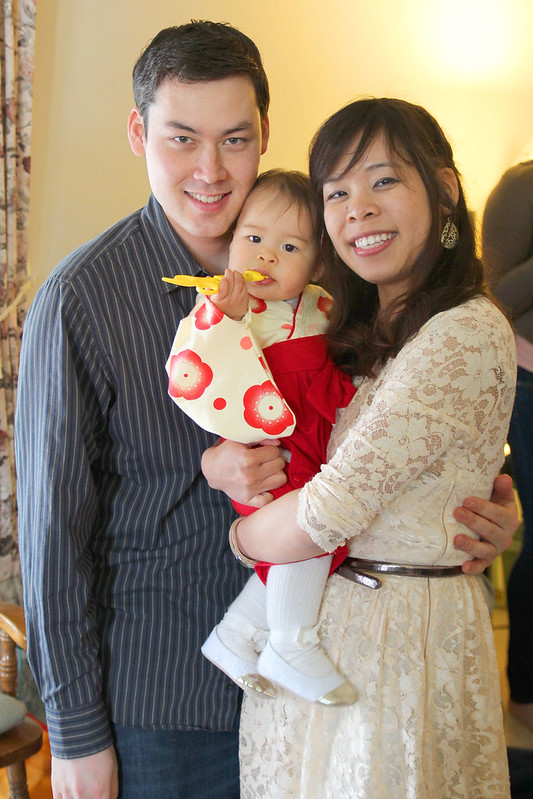
Mio successfully carried the issho mochi, and we got a peek at Mio’s destiny when she picked the scissors during erabitori. We’re excited about the possibility that she will be crafty, like both of her parents!
(Special thanks to Megumi for the video footage and some of the photos taken on her phone that we used in this post!)
We have yet to post about the finale activity of Mio’s birthday party, so keep an eye out for Part III! ¤Öé